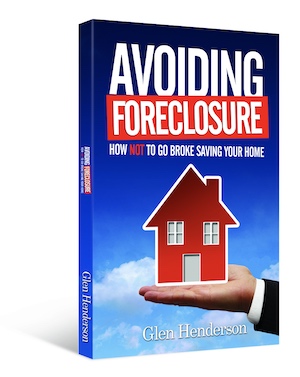How Long Does A Foreclosure Stay on Credit?
The process of foreclosure is difficult and emotional enough without the meteoric impact on your credit score. Once the dust settles, you may be frustrated and anxious to find that your credit score has dropped rapidly and it’s now tough to qualify for a good mortgage for a new home. How long does foreclosure stay on credit? How bad is it? And what can you do to improve your credit after a foreclosure?
Foreclosure and Your Credit
A foreclosure will stay on your credit score for seven years. The seven year period starts on the date of your first late payment, however, which means that for most people the foreclosure will remain on credit for about six years after the final foreclosure takes place.
Foreclosure can really damage your credit, up to 100 points or more. It can be really tough to rebuild credit during this period as well, because some lenders have rules that they won’t even lend to an applicant who has a foreclosure on their record. Other lenders want the foreclosure to be at least 3 or more years. And even if someone does consider lending to a person with foreclosure on their record, the rates and fees will probably be much higher than they would be for someone with a better credit situation.
Ways to Minimize Credit Score Damage When Behind on Payments
Talk to Your Lender
As a borrower, you should always have open and honest communication with your lender. The best way to prevent a catastrophic foreclosure is to maintain a dialogue about your financial situation and where your payments are at. Most lenders are more willing to work with borrowers who are more up front and honest about their financial situation. Get out ahead of the foreclosure.
Adjust Your Mortgage
You may not qualify for refinancing unless you have a steller credit score and a convincing financial situation, but if you do, this is your best bet. If you can’t refinance, you might be able to get a modification on your current mortgage, or at least enter forbearance to pay back the payments that you are behind on.
Short Sale
While short sales and foreclosures aren’t super different on a practical level, they make a huge difference in the hit to your credit score. Short sales will not destroy your credit score in the same way, and many people who go through a short sale are able to get a new mortgage shortly after. It shows that you are proactive and able to lower the risk to the lender.
Deed in Lieu of Foreclosure
If you can get the lender to agree to it, a deed in lieu of foreclosure is a much better option than actual foreclosure. It will save your credit score by allowing the lender to forgive your mortgage in exchange for receiving the property back.
Rebuilding Credit After a Foreclosure
It’s a long and frustrating road to rebuild credit after a foreclosure takes place. Even if you pay everything else on time and make great strides, foreclosure continues to drag your points down—and it also can prevent you from obtaining a new mortgage and making new mortgage payments, which would certainly help your credit score.
If you couldn’t avoid foreclosure in any way, you can still work to minimize the impact to your credit score. Here are some things that can help you rebuild your credit score:
Pay Bills on Time
Even when you’re going through foreclosure, and especially afterwards, make payments on credit cards and car loans in a timely manner. Keeping up with other payments shows that you haven’t completely gone sour on your obligations.
Secured Credit Cards
You may struggle to get a new credit card after foreclosure, but a secured credit card can use a deposit as a guarantee of payment. It significantly lowers the risk for lending institutions, and helps you get approved for a new line of credit. You can then make timely payments and slowly raise your credit score back up.
Improve Credit Utilization
One big factor affecting your credit score is your utilization ratio. Ideally, you want a ratio below 30%, meaning that you are approved for far more credit than you are currently using. For instance, if you have a credit card with a $10,000 limit and only have $2,500 on the card, then your credit utilization ratio would be 25%. That’s right where you want to be. Make sure to get approved for new credit and pay down old credit to remain under that 30% threshold if at all possible.




